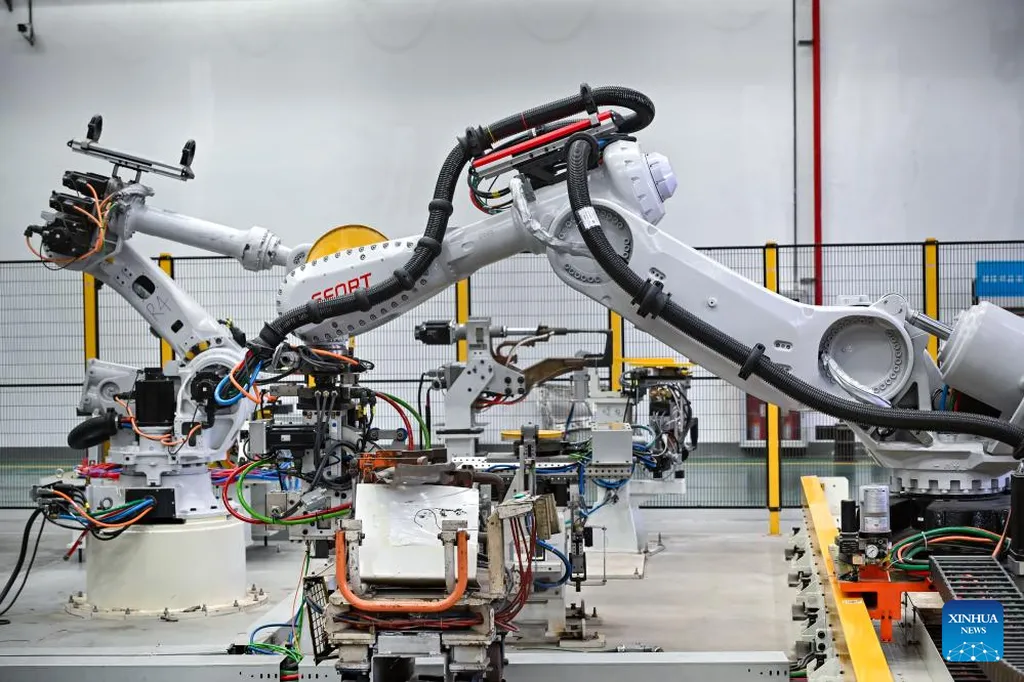In the heart of Wuhu, China, researchers are pushing the boundaries of industrial robotics, and their latest findings could reshape the way we approach robot design and longevity. J. Xu, a leading figure from the School of Intelligent Manufacturing at Wuhu University, has spearheaded a study that promises to bring a new level of accuracy and reliability to the simulation of industrial robots. The research, published in the esteemed journal *Mechanical Sciences* (translated from Chinese as *机械科学*), focuses on the kinematics and dynamics analysis of a 6-DOF (degrees of freedom) industrial robot, offering insights that could significantly impact the energy sector and beyond.
The study introduces a novel method that combines ADAMS and ANSYS software to simulate the loading and unloading processes of industrial robots. This approach allows for a detailed analysis of the robot’s motion characteristics and structural integrity. “By establishing a floating coordinate system and using transformation matrices, we built a forward kinematics theoretical model,” Xu explains. “This model helps us understand the spatial pose of the robot’s end effector and, through inverse transformation, determine the rotation angles of the moving joints.”
The implications of this research are profound, particularly for industries that rely on heavy-duty robots for tasks such as material handling and assembly. The energy sector, for instance, could benefit greatly from robots that are not only more efficient but also have a longer service life. “Our simulations show that the maximum stress and strain during the loading and unloading process are well within the limits of the materials used, such as 304 stainless steel and 6061 aluminum alloy,” Xu notes. “This means the robots can handle the rigors of industrial operations without compromising their structural integrity.”
The study’s findings suggest that the simulation method proposed by Xu and his team can provide more realistic and reliable results. This could lead to better-designed robots that are optimized for strength and stiffness, ultimately reducing downtime and maintenance costs. “The maximum deformation of the robot was found to be minimal, indicating that the overall stiffness meets the design requirements,” Xu adds. “This level of accuracy in simulation can help manufacturers determine the support and service life of their robot structures.”
As the energy sector continues to evolve, the demand for robust and efficient industrial robots is on the rise. Xu’s research offers a promising avenue for achieving these goals. By leveraging advanced simulation techniques, manufacturers can design robots that are not only more capable but also more durable, ensuring they can withstand the demanding conditions of industrial environments.
The study’s publication in *Mechanical Sciences* underscores its significance in the field of mechanical engineering. As researchers and industry professionals continue to explore the potential of this method, the future of industrial robotics looks brighter than ever. Xu’s work serves as a testament to the power of innovation and the potential it holds for transforming industries.

